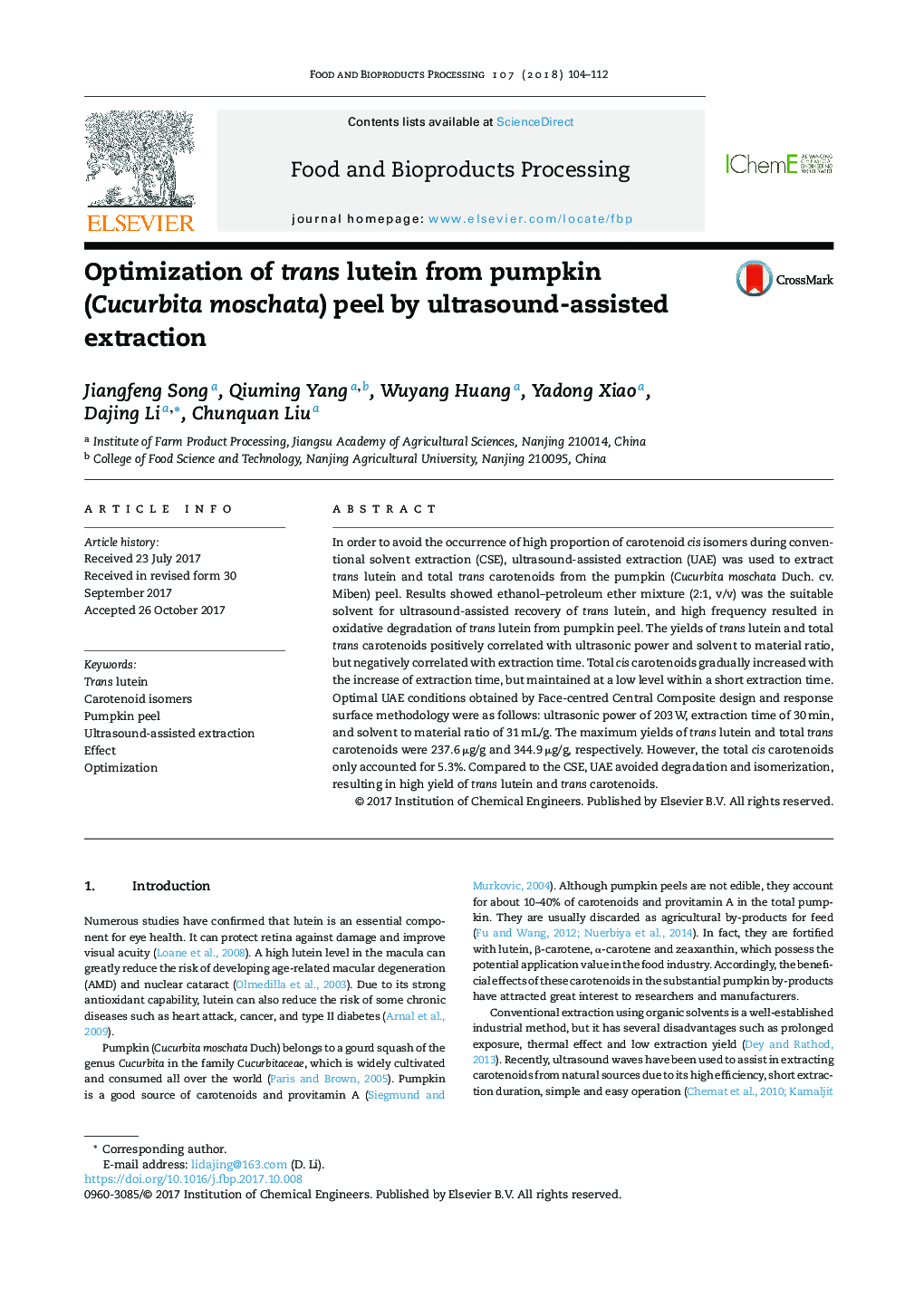| Article ID | Journal | Published Year | Pages | File Type |
|---|---|---|---|---|
| 6488402 | Food and Bioproducts Processing | 2018 | 9 Pages |
Abstract
In order to avoid the occurrence of high proportion of carotenoid cis isomers during conventional solvent extraction (CSE), ultrasound-assisted extraction (UAE) was used to extract trans lutein and total trans carotenoids from the pumpkin (Cucurbita moschata Duch. cv. Miben) peel. Results showed ethanol-petroleum ether mixture (2:1, v/v) was the suitable solvent for ultrasound-assisted recovery of trans lutein, and high frequency resulted in oxidative degradation of trans lutein from pumpkin peel. The yields of trans lutein and total trans carotenoids positively correlated with ultrasonic power and solvent to material ratio, but negatively correlated with extraction time. Total cis carotenoids gradually increased with the increase of extraction time, but maintained at a low level within a short extraction time. Optimal UAE conditions obtained by Face-centred Central Composite design and response surface methodology were as follows: ultrasonic power of 203 W, extraction time of 30 min, and solvent to material ratio of 31 mL/g. The maximum yields of trans lutein and total trans carotenoids were 237.6 μg/g and 344.9 μg/g, respectively. However, the total cis carotenoids only accounted for 5.3%. Compared to the CSE, UAE avoided degradation and isomerization, resulting in high yield of trans lutein and trans carotenoids.
Related Topics
Physical Sciences and Engineering
Chemical Engineering
Bioengineering
Authors
Jiangfeng Song, Qiuming Yang, Wuyang Huang, Yadong Xiao, Dajing Li, Chunquan Liu,
